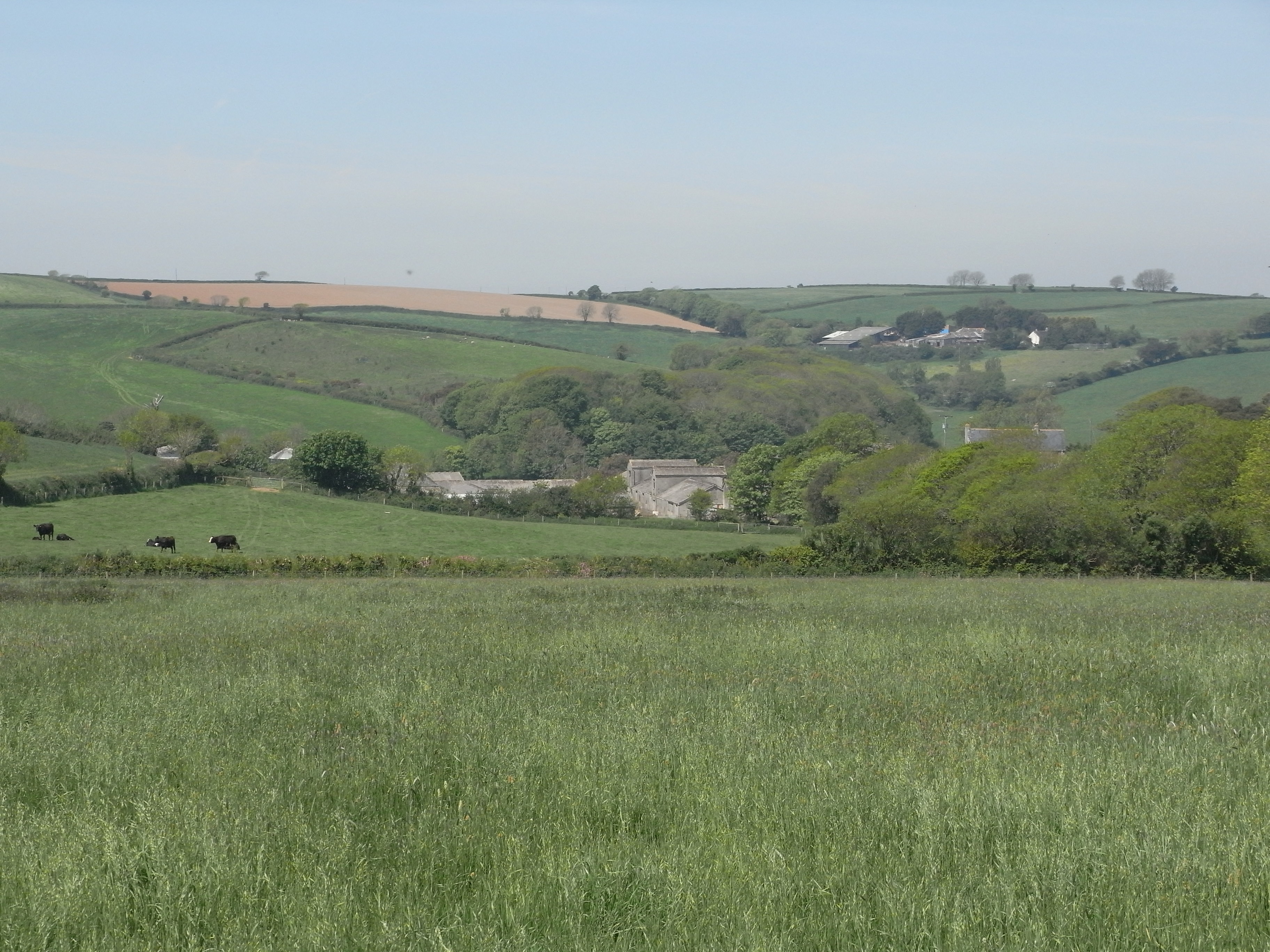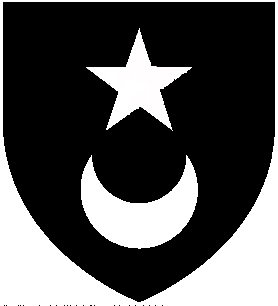|
Whympston, Modbury
Whympston (anciently Wimpstone, Wymondston, Wimston, Wymston, etc), in the parish of Modbury in Devon, England, is a historic manor. In the 12th century, it became the earliest English seat of the prominent Norman family of Fortescue, influential in British and West Country history, which survives today as Earl Fortescue, seated at Ebrington in Gloucestershire, but until recently seated at Castle Hill and Weare Giffard in Devon. Descent Fortescue As the 17th-century Fortescue mural monument in the parish church of Weare Giffard (see below) states, "Whympstone" (modern spelling "Whympston") in the parish of Modbury is the oldest known home of the Fortescue family. The manor of Whympston is thought to have been granted to them by King John in 1209, but according to Hoskins they were already in the district in about 1140, when Ralph Fortescue donated some land to Modbury Priory at about the time of its foundation. William Fortescue (died post-1406) William Fortescue (died p ... [...More Info...] [...Related Items...] OR: [Wikipedia] [Google] [Baidu] |
William Pole (antiquary)
Sir William Pole (1561–1635) of Colcombe House in the parish of Colyton, and formerly of Shute House in the parish of Shute (adjoining Colcombe), both in Devon, was an English country gentleman and landowner, a colonial investor, Member of Parliament and, most notably, a historian and antiquarian of the County of Devon. Career Pole was baptised on 27 August 1561 at Colyton, Devon, the son of William Pole, Esquire (c.1514 – 1587), MP, by his wife Katherine Popham (died 1588), daughter of Alexander Popham of Huntworth, Somerset by his wife Joan Stradling. Katherine was the sister of John Popham (1531–1607), Lord Chief Justice. In 1560 his father had purchased Shute House, near Colyton and Axminster, Devon. He entered the Inner Temple in 1578, was placed on the Commission of the Peace for Devonshire, served as Sheriff of Devon in 1602–3, and was MP in 1586 for Bossiney, Cornwall. He was knighted by King James I at Whitehall Palace on 15 February 1606. He paid i ... [...More Info...] [...Related Items...] OR: [Wikipedia] [Google] [Baidu] |
Bishop Of Exeter
The Bishop of Exeter is the ordinary of the Church of England Diocese of Exeter in the Province of Canterbury. Since 30 April 2014 the ordinary has been Robert Atwell.Diocese of Exeter – Election of new Bishop of Exeter formally confirmed (Accessed 9 May 2014) From the first until the sixteenth century the Bishops of Exeter were in full communion with the |
Edmund Stafford
Edmund Stafford (1344 – 3 September 1419) was Bishop of Exeter from 1395 to his death in 1419. Origins He was the second son of Sir Richard Stafford (born post 1301-d.1381) "of Clifton Campville" in Staffordshire (the second son of Edmund Stafford, 1st Baron Stafford (1272/3-1308) of Stafford Castle in Staffordshire and the younger brother of Ralph Stafford, 1st Earl of Stafford, 2nd Baron Stafford (1301-1372) of Stafford Castle). His father is stated in some sources to have been "Baron Stafford of Clifton", but no such title is listed in the authoritative ''The Complete Peerage''. His mother was Isabel de Vernon (d.1356), a daughter of Richard de Vernon (d.1323) (son and heir apparent of Richard de Vernon of Haddon Hall in Derbyshire, whom he predeceased) by his wife Maud de Camville, a daughter and co-heiress of William de Camville, 2nd Baron Camville (1268-1338), of Clifton Campville. Career Stafford attended Oxford University, graduating BA in 1363; in the sam ... [...More Info...] [...Related Items...] OR: [Wikipedia] [Google] [Baidu] |
Lord Chief Justice Of England And Wales
Lord is an appellation for a person or deity who has authority, control, or power over others, acting as a master, chief, or ruler. The appellation can also denote certain persons who hold a title of the peerage in the United Kingdom, or are entitled to courtesy titles. The collective "Lords" can refer to a group or body of peers. Etymology According to the Oxford Dictionary of English, the etymology of the word can be traced back to the Old English word ''hlāford'' which originated from ''hlāfweard'' meaning "loaf-ward" or "bread-keeper", reflecting the Germanic tribal custom of a chieftain providing food for his followers. The appellation "lord" is primarily applied to men, while for women the appellation "lady" is used. This is no longer universal: the Lord of Mann, a title previously held by the Queen of the United Kingdom, and female Lords Mayor are examples of women who are styled as "Lord". Historical usage Feudalism Under the feudal system, "lord" had a wid ... [...More Info...] [...Related Items...] OR: [Wikipedia] [Google] [Baidu] |
Ebrington Manor
Ebrington Manor is a grade II listed manor house in the parish of Ebrington in Gloucestershire, England. Since 1476 it has been a seat of the Fortescue family, since 1789 Earls Fortescue. Location It is located within the village of Ebrington in Gloucestershire, immediately to the south-west of the parish church of Ebrington. History The house dates back to the fourteenth or fifteenth century, and was significantly altered twice, in the seventeenth and nineteenth centuries. It was built on land purchased by Sir John Fortescue (c.1394-1479), who was Chief Justice of the King's Bench. An heraldic cartouche above the entrance door displays the arms of Fortescue impaling Aylmer, representing Hugh Fortescue (1665–1719), and his second wife Lucy Aylmer, whom he married after 1708, a daughter of Matthew Aylmer, 1st Baron Aylmer (circa 1650–1720), grandparents of Hugh Fortescue, 1st Earl Fortescue (1753-1841). During World War II the house was run by the American Red Cr ... [...More Info...] [...Related Items...] OR: [Wikipedia] [Google] [Baidu] |
John Fortescue (judge)
Sir John Fortescue ( 1394 – December 1479) of Ebrington in Gloucestershire, was Chief Justice of the King's Bench and was the author of ''De Laudibus Legum Angliae'' (''Commendation of the Laws of England''), first published posthumously ''circa'' 1543, an influential treatise on English law. In the course of Henry VI's reign, Fortescue was appointed one of the governors of Lincoln's Inn three times and served as a Member of Parliament from 1421 to 1437. He became one of the King's Serjeants during the Easter term of 1441, and subsequently served as Chief Justice of the King's Bench from 25 January 1442 to Easter term 1460. During the Wars of the Roses, Henry VI was deposed in 1461 by Edward of York, who ascended the throne as Edward IV. Henry and his queen, Margaret of Anjou, later fled to Scotland. Fortescue remained loyal to Henry, and as a result was attainted of treason. He is believed to have been given the nominal title of Chancellor of England during Henry's e ... [...More Info...] [...Related Items...] OR: [Wikipedia] [Google] [Baidu] |
Earl Of Clermont
Earl () is a rank of the nobility in the United Kingdom. The title originates in the Old English word ''eorl'', meaning "a man of noble birth or rank". The word is cognate with the Scandinavian form ''jarl'', and meant "chieftain", particularly a chieftain set to rule a territory in a king's stead. After the Norman Conquest, it became the equivalent of the continental count (in England in the earlier period, it was more akin to a duke; in Scotland, it assimilated the concept of mormaer). Alternative names for the rank equivalent to "earl" or "count" in the nobility structure are used in other countries, such as the '' hakushaku'' (伯爵) of the post-restoration Japanese Imperial era. In modern Britain, an earl is a member of the peerage, ranking below a marquess and above a viscount. A feminine form of ''earl'' never developed; instead, ''countess'' is used. Etymology The term ''earl'' has been compared to the name of the Heruli, and to runic '' erilaz''. Proto-Norse ' ... [...More Info...] [...Related Items...] OR: [Wikipedia] [Google] [Baidu] |
Buckland Filleigh
Buckland Filleigh is a village, civil parish and former manor in the Torridge district of North Devon, England, situated about 8 miles south of the town of Great Torrington. According to the 2001 census, the parish had a population of 170. It is surrounded clockwise from the north by the parishes of Peters Marland, Petrockstowe, Highampton, Sheepwash and Shebbear. Within the parish is the manor house known as Buckland House, damaged by fire in 1798 and rebuilt in 1810 in the neo-classical style by John Inglett Fortescue (1758–1841) to the designs of the architect James Green. History The manor of Buckland Filleigh is listed in the Domesday Book Domesday Book () – the Middle English spelling of "Doomsday Book" – is a manuscript record of the "Great Survey" of much of England and parts of Wales completed in 1086 by order of King William I, known as William the Conqueror. The manusc ... and was later held successively by the families of de Filleigh, Denzell, Fortes ... [...More Info...] [...Related Items...] OR: [Wikipedia] [Google] [Baidu] |
Filleigh
Filleigh is a small village, civil parish and former manor in North Devon, on the southern edge of Exmoor, west of South Molton. The village centre's street was, until the 1980s opening of the North Devon Link Road, the main highway between the North Devon administrative centre of Barnstaple and South Molton, leading westwards to Taunton. Much of the village's land is contained within grade I listed park and garden, Castle Hill, which straddles both sides of the Link Road providing a glimpse of some of it. History Manor De Filleigh The manor was held in the 14th century by a family which took its name from the manor, de Filleigh. The family also held lands within the neighbouring settlements of East Buckland, Bray and Charles. Denzell On default of male heirs, the manor passed by marriage to the Denzell (or Densyll etc.) family. This family originated from Denzell manor in St Mawgan parish, near St Columb Major, near Newquay, Cornwall. The senior line became extinct in ... [...More Info...] [...Related Items...] OR: [Wikipedia] [Google] [Baidu] |
Hundred Years' War
The Hundred Years' War (; 1337–1453) was a series of armed conflicts between the kingdoms of Kingdom of England, England and Kingdom of France, France during the Late Middle Ages. It originated from disputed claims to the French Crown, French throne between the English House of Plantagenet and the French royal House of Valois. Over time, the war grew into a broader power struggle involving factions from across Western Europe, fuelled by emerging nationalism on both sides. The Hundred Years' War was one of the most significant conflicts of the Middle Ages. For 116 years, interrupted by several Ceasefire, truces, five generations of kings from two rival Dynasty, dynasties fought for the throne of the dominant kingdom in Western Europe. The war's effect on European history was lasting. Both sides produced innovations in military technology and tactics, including professional standing armies and artillery, that permanently changed warfare in Europe; chivalry, which had reac ... [...More Info...] [...Related Items...] OR: [Wikipedia] [Google] [Baidu] |




